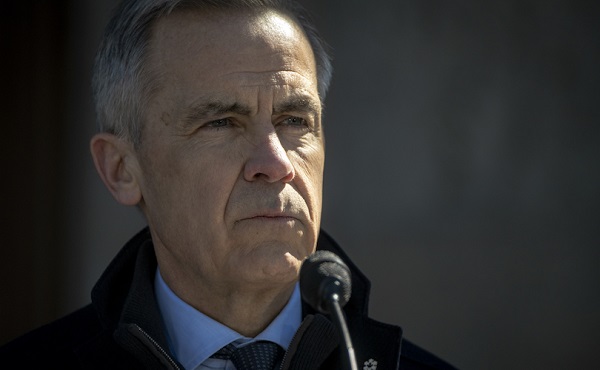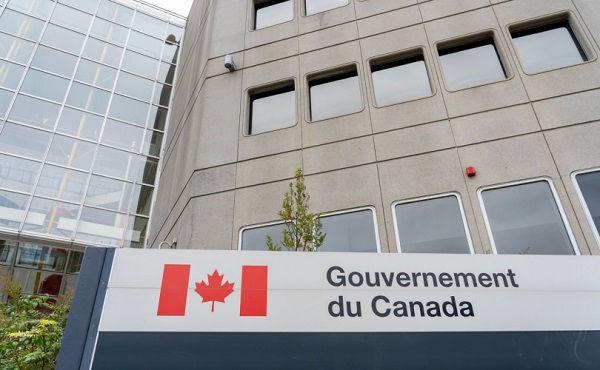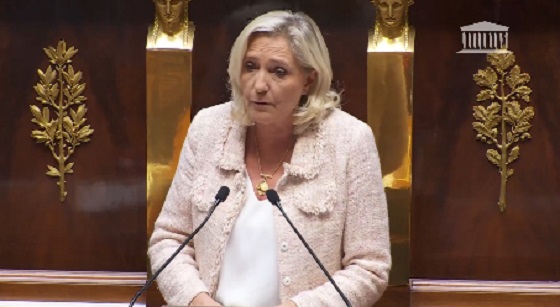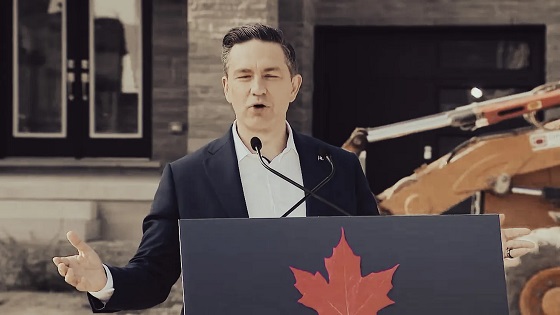MacDonald Laurier Institute
Canada is completing Confederation

From the MacDonald Laurier Institute
By Ken Coates
For generations, decisions about the North were made in Ottawa. While consultations improved, final decisions still rested outside the territory. That has now ended.
Something important is up in the Far North. With the signing of the Nunavut Devolution Agreement, Canada is completing Confederation.
Prime Minister Justin Trudeau travelled to Iqaluit to join Nunavut Premier P.J. Akeeagok, Nunavut Tunngavik Inc. president Aluki Kotierk, and federal Northern Affairs Minister Dan Vandal on Jan. 18, 2024, to sign the history-making document. What seems to be a technical administrative process is, in fact, a transformative event in the evolution of the North.
Canadians have had trouble coming to terms with their status as a colonial power, both on the broad front of the mismanagement of Indigenous affairs, and the more traditional colonial control exerted over the territories. In 1870, the Northwest Territories stretched from the Rocky Mountains to Labrador, and the 49th parallel to the Arctic Ocean and much of Baffin Island—much larger than the original four provinces.
Over more than 150 years, Canada slowly peeled back its colonial holdings. Manitoba grew from a “postage stamp” province to its current dimensions. Alberta and Saskatchewan were carved out of the Northwest Territories. The Arctic Islands were added in 1880. The Yukon gained separate territorial status in 1898. Ontario and Quebec had their boundaries extended northward. The remaining lands of the Northwest Territories covered much of the Far North until Nunavut was created as a separate territory in 1999.
The establishment of provincial and territorial boundaries did not establish political fairness across the country. Alberta, Manitoba, and Saskatchewan only secured control over natural resources in 1930, although the lack of consultation with Indigenous Peoples has resulted in a recent court challenge about the exclusion.
The Yukon only got responsible government in 1979; before then, the Yukon and the Northwest Territories were controlled by federally appointed commissioners.
When Canada patriated the Constitution, the final agreement virtually foreclosed the prospect of the Yukon, the Northwest Territories and Nunavut ever achieving full provincial status.
Given less than a perfect hand, the northern territories have systematically negotiated their way into partnership in Confederation. Modern treaties and self-government agreements that now cover much of the Yukon and Northwest Territories and all of Nunavut re-empowered Indigenous Peoples.
Devolution—the transfer of responsibilities (and the funding associated with these duties) from the federal government to the territorial governments—reduces the power of Ottawa and brings the territorial governments closer to province-like status.
The process unfolded slowly. The territories assumed responsibility for health care, education, highways, and many other duties over time.
But the most important transition, the transfer of responsibility for land and natural resources, remained to the end.
The recent Iqaluit signing was a celebration of this crucial stage. The agreement gives Nunavut province-like powers over resource development and land use.
The agreement promises a different future. Nunavut has impressive mineral resources and considerable opportunities to develop them. Akeeagok and his colleagues emphasized the importance of resource control and their eagerness to do it right, making it abundantly clear that the people of Nunavut are determined to change decision-making about the territory. This point is critical—and it is the main purpose of devolution.
For generations, decisions were made in Ottawa, with no direct engagement with the people of the territory. Judgments reflected southern or national priorities and not necessarily northern needs. While consultations improved, final decisions still rested outside the territory. That has now ended.
The transfer does not signal a retreat of the federal government from the North, nor does it mark an end of northern requests for federal financial support. Small and widely distributed populations, vast expanses of land, and the high cost of living, working, and building will always make the Far North reliant on southern funds. But the balance can shift. With control of natural resources and the ability to extract territorial revenue along with the minerals, Nunavut will secure more money and even greater autonomy from Ottawa.
The Nunavut agreement means that all three northern territories now have control of land and natural resources. The federal government has a significantly reduced role. Like the southern provinces, the Far North now has the power and responsibility needed to determine their own economic futures.
Ken Coates is a distinguished fellow and the director of Indigenous affairs at the Macdonald-Laurier Institute.
Housing
Government, not greed, is behind Canada’s housing problem

By Anthony De Luca-Baratta for Inside Policy
When it comes to housing unaffordability in Canada, Prime Minister Mark Carney has correctly diagnosed the problem – but prescribed the wrong solution. The cost of new homes across the country increasingly exceeds the average family’s budget. But Carney’s proposal to establish a new federal entity, Build Canada Homes, to “get the government back in the business of homebuilding,” will make matters worse.
During the recent election campaign, the Liberal leader promised to make the federal government into an affordable housing developer by, among other proposals, offering low-cost financing to affordable-housing builders. This approach falsely implies that housing is what economists call a public good – something governments provide because the market cannot.
National defence is a perfect example of a public good: private contractors alone would be unable to withhold protection from those who failed to pay for their services, incentivizing many to welcome the security without paying a dime. In economics jargon, this is known as the “free-rider problem.” Defence contractors would quickly go bankrupt, and the nation would be left defenceless. For this reason, the government is the primary provider of national defence in all functioning states.
If housing suffered from the same market failure as national defence, the government’s approach would have some merit. But it does not, indicating that housing is not, in fact, a public good. The laws of supply and demand are thus the most efficient way of determining both the quantity and price of housing.
In a free housing market, when prices begin to rise, builders build more units to earn higher profits. Over time, competition among builders, homeowners, and landlords forces prices back down because individuals who overcharge lose customers to those who do not. Because overcharging is bad for business, the market provides an abundance of housing at prices negotiated among millions of buyers and sellers. The result is a natural supply of affordable housing – no special incentives needed.
Some in Canada might dismiss this logic as hopelessly naïve. According to these individuals, inflated prices come primarily from landlords and developers squeezing Canadians for more profit and greed is running rampant in the Canadian housing market.
The truth is that developers and landlords are responding rationally to bad economic policy, and homebuyers and renters are footing the bill. Municipalities across Canada limit building heights, set aesthetic standards, ban certain types of construction in designated areas, impose parking requirements, and legislate minimum lot sizes, among a host of other land-use regulations.
These rules make housing harder and more costly to build, constraining supply and radically inflating prices. The C.D. Howe Institute estimates that these regulations cost homebuyers an average of $230,000 in Vancouver, Abbotsford, Victoria, Kelowna, Calgary, Toronto, and Ottawa-Gatineau. In Vancouver, that figure is an eye-watering $1 million.
It is this economic reality, not an unwillingness to build affordable housing, that lies at the root of Canada’s housing crisis.
Housing Minister Gregor Robertson inadvertently admitted as much when he cautioned that there would be no quick solution to Canada’s housing crisis because “projects take years to approve and build.” The minister failed to acknowledge that these delays are due to cumbersome municipal regulations.
To solve Canada’s housing crisis, Carney must begin by recognizing that affordable housing in Canada is in short supply because local governments have made it impossible to build. The housing market could provide affordable housing on its own – no taxpayer-funded subsidies required – if only the government would reduce burdensome industry regulations. Just look at jurisdictions with virtually no land-use regulations, like Houston, Texas, where housing is abundant and affordable. Studies have consistently shown that wherever land-use regulations are low, so are home prices.
To be fair, the Liberal Party’s election platform did acknowledge the need to cut federal housing regulations. It also suggested that it wanted local governments to streamline development, though it was short on specifics. But since the election, there is no sign that the government is moving forward with any of these proposals.
The prime minister needs to tell local governments that their federal funds will dry up if they don’t start getting out of the way of housing development. He should also offer bonuses to cities that are especially quick to build new units. Canadians need shovels in the ground now. It is time for the prime minister to use the bully pulpit to put them there.
Anthony De Luca-Baratta is a contributor to the Center for North American Prosperity and Security, a project of the Macdonald-Laurier Institute, and a Young Voices Contributor based in Montreal. He holds a master’s degree in international relations from the Johns Hopkins School of Advanced International Studies in Washington, DC.
Alberta
A misinformation bubble in action—Egale Canada v. Alberta

By Geoffrey Sigalet for Inside Policy
Justice Kuntz completely set aside the question of whether the medical benefits of these procedures are supported by evidence… That these identities are highly fluid, and the adverse consequences of pursuing these procedures are serious and irreversible, was ostensibly of little to no importance
A pair of recent judicial rulings – one in Canada and the other in the United States, both on the matter of gender medicine – saw the courts reach dramatically different conclusions. But each case tells the story of the yet-to-be-burst “liberal misinformation bubble” that exists around this issue.
On June 18, 2025, the United States Supreme Court issued its long-awaited decision in United States v. Skrmetti. A 6-3 majority upheld Tennessee’s ban on puberty blocking drugs, cross-sex hormones, and sex reassignment surgeries for minors.
Nine days later, Justice Allison Kuntz – who was appointed to the Alberta Court of King’s Bench by the federal government in 2023 – issued an interlocutory decision in Egale Canada v. Alberta. It’s a case brought to challenge Alberta’s controversial Health Statutes Amendment Act 2024 (the HSAA), which would have implemented the province’s own restrictions on puberty blockers, cross-sex hormones, and sex transition surgeries for minors. The decision granted an interim injunction to prevent certain sections of the law from coming into force while the legal challenge is heard.
Advocacy groups have celebrated Justice Kuntz’s ruling as a landmark win. For now, there remain reasons for them to be optimistic she will also decide the case’s merits very differently from the majority in Skrmetti. However, in the big picture, that confidence may not be warranted given mounting evidence against their cause and the options open to Alberta.
 Indeed, to say the Egale and Skrmetti decisions are worlds apart is to state the obvious. But while it is tempting to explain the diverging outcomes by reference to the distinct legal regimes in place in the US and Canada, such a conclusion ignores significant similarities between the factual and procedural context of the American and Canadian cases.
Indeed, to say the Egale and Skrmetti decisions are worlds apart is to state the obvious. But while it is tempting to explain the diverging outcomes by reference to the distinct legal regimes in place in the US and Canada, such a conclusion ignores significant similarities between the factual and procedural context of the American and Canadian cases.
Notably, there was a request for an interlocutory injunction in both the Egale Canada and Skrmetti cases. All the more striking, the United States District Court initially awarded the injunction in Skrmetti before the Sixth Circuit overturned it on appeal.
Moreover, the evidence tendered in both cases was fundamentally similar. Ultimately, the differing outcomes can be attributed primarily to the manner in which the judges interpreted evidence before them, and especially the assumptions they brought to bear in their analysis.
In Skrmetti, a majority of the Sixth Circuit and US Supreme Court judges straightforwardly appreciated the significant evidence that’s accrued demonstrating the harm caused by these interventions, and the continuing lack of evidence regarding benefits. For her part, Justice Kuntz, like the dissenting American judges in Skrmetti, took the administration of puberty blockers, cross-sex hormones, and sex transition surgeries on minors to be, if not an absolute good, then at least a good that strongly outweighs potential adverse consequences.
In both cases, their assessments appear to reflect what journalist Helen Lewis of The Atlantic has recently labelled a “liberal misinformation bubble” – in which assumptions concerning these procedures’ benefits and risks remain frozen in time, while evidence of harm mounts and a lack of evidence of benefits becomes clearer.
As Lewis’ exposé highlights, and as others have also noted, there is in fact almost no evidence to support these interventions’ claimed benefits. Moreover, what evidence exists has been cast into doubt by revelations – including in documents obtained through discoveries in an Alabama case – that the organizations setting standards of care and commissioning most research have been compromised by a political commitment to what they tellingly call “gender-affirming care.” Even the claim that these interventions are necessary to avert suicide in trans-identifying minors – once the primary argument made by supporters, and still often invoked against detractors, including in a recent Globe and Mail editorial – has little to no evidentiary support. In fact, the lack of supporting evidence for this claim was even conceded by counsel arguing against the Tennessee law in Skrmetti.
While claims of benefits appear dubious and politically motivated, the evidence of harm, meanwhile, continues to mount. Notably, just as the US Supreme Court’s decision in Skrmetti was about to be released, a new paper was published outlining the serious long-term health complications caused by administering estrogen to biological males. These findings only added to the known long-term consequences of administering puberty blocking drugs and cross-sex hormones to minors, which can include permanent infertility, anorgasmia, bone density loss, and other permanent physiological changes.
Consistent with Lewis’ thesis, these developments have been resisted by large swaths of the political left in the United States and elsewhere. Such resistance to this information is also evident in the dissenting judges’ assertions in Skrmetti, who continue to characterize these procedures as a “question of life or death” despite the absence of evidence.
But even they (the dissenting judges) did not go quite as far as Justice Kuntz in Egale, particularly in her analysis of whether the plaintiffs would suffer irreparable harm if an injunction was not granted. In Justice Kuntz’s estimation, “[t]he evidence shows that the Ban will cause irreparable harm by causing gender diverse youth to experience permanent changes to their body that do not align with their gender identity.” To this, she adds in the very next paragraph: “the evidence shows that singling out health care for gender diverse youth and making it subject to government control will cause irreparable harm to gender diverse youth by reinforcing the discrimination and prejudice that they are already subjected to. Intentionally or not, the Ban will signal that there is something wrong with or suspect about having a gender identity that is different than the sex you were assigned at birth.”
These statements suggest that Justice Kuntz completely set aside the question of whether the medical benefits of these procedures are supported by evidence. Instead, she appears to have taken it as a given that “gender diverse youth” have an innate and immutable gender identity and will suffer irreparable injury if they are simply allowed to go through a natural puberty. That these identities are highly fluid, and the adverse consequences of pursuing these procedures are serious and irreversible, was ostensibly of little to no importance at this stage of her analysis. Meanwhile, her findings assume these restrictions would increase discrimination and prejudice towards children experiencing gender dysphoria – even if no evidence was tendered to support this conclusion.
The confidence with which Justice Kuntz reaches these conclusions is all the more remarkable. A ruling on a preliminary injunction requires only a “high degree of probability,” yet she speaks with apparent certainty when she asserts “there will be irreparable harm to transgender youth if an injunction is not granted.” In fact, there is a tension between the certainty of this statement, and her own recognition earlier in her ruling that the “merits” of the parties’ expert evidence regarding hormone therapy “cannot be, nor should they be, resolved on this application.”
Moreover, unlike other recent Charter cases in which Canadian courts have issued interlocutory injunctions on dubious grounds – such as the prohibition on drug use in public parks in British Columbia, and the removal of bike lanes in Toronto – the Egale case is not even an instance that pits the purported “harm” faced by a discrete group of persons against the broader good of the community. The individuals involved in Egale – minor children – are the very same persons for whose benefit the Alberta legislature has intervened. On balance, it was thus entirely reasonable for Alberta’s legislative measures to be allowed to come into force, so as to prevent further harm being done to some of the most vulnerable members of society until such time as a full hearing could be given to the merits of the case.
To be fair, in her later discussion of the “balance of convenience” – the court’s assessment of whether granting or refusing the injunction would cause greater harm – Justice Kuntz addresses Alberta’s argument that the HSAA’s relevant sections in fact prevent harm. But even considering these nuances, the judge’s analysis still succumbs to the “liberal misinformation bubble” Lewis identified. To contradict Alberta’s evidence on this argument, the justice leans on “the professional standards of Alberta’s health-care professions,” which she suggests will be sufficient to counteract the harms raised by Alberta while awaiting a decision on the merits. However, this conclusion ignores a key factor that Lewis highlights, and which Alberta presented: the claim that the medical profession has been politicized on this issue, and its professional standards are therefore not trustworthy.
Furthermore, Justice Kuntz mischaracterizes the evidence about the types of harm Alberta’s legislation is meant to address, by claiming that it is only meant to benefit “the small group of people” who are prescribed hormone therapy and “later regret it.” In reality, Alberta’s evidence shows its policies are meant to mitigate a host of serious health risks, including for those minors who later in life do not regret transitioning. If the administration of cross-sex hormones to minors unacceptably increases the risk of sterility, bone density deterioration, or other health risks, it will do so both for minors who detransition and those who do not.
Finally, these mischaracterizations of the harms that would be caused and prevented by the HSAA are further exacerbated by Justice Kuntz’s decision to pre-emptively block the relevant sections, instead of waiting to prohibit their operation once already in force. Her decision results from a clever choice made by Egale Canada to proactively challenge the relevant provisions of the HSAA prior to their coming into force. This allowed the law to be considered without accompanying ministerial orders the Alberta government had announced. These would have notably included an order allowing the administration of cross-sex hormones in exceptional cases, such as where children are already in the midst of the intervention, or where minors aged 16-17 have parental, physician, and psychologist approval. By excluding the order from the court’s consideration, Egale was able to make a superficially more compelling case against the law, arguing it was not tailored to the complex needs of children experiencing gender dysphoria.
Under these circumstances, it would at minimum have been much more appropriate for Justice Kuntz to exercise her judicial discretion to refuse an injunction, until such a time as the ministerial orders were issued and a full accounting of the HSAA’s impacts could be made. After all, no one was being irreparably harmed by legislation not in force. It was certainly plausible that the proclamation and ministerial orders would have reduced the risk of irreparable harm that Justice Kuntz identified. This is to say nothing of the possibility that Justice Kuntz may have acted in a manner contrary to law, and contrary to the constitution, in preventing the law’s coming into force in this way. Notably, the Supreme Court has held that Canadian courts are not to issue “private references” about potential legal issues. Less than four years ago, the Alberta Court of Appeal further held in somewhat analogous circumstances that it was inappropriate for the King’s Bench to hear a constitutional challenge to the Kenney government’s Critical Infrastructure Defence Act based on only “hypothetical scenarios”.
Justice Kuntz’s reasoning is unfortunate. It suggests a failure to grasp the core issues underlying the HSAA’s contested provisions. It abdicates the pressing need to protect minors from unnecessary, irreversible, and potentially devasting interventions that the medical profession has, for one reason or another, failed to adequately regulate on its own. Moreover, it poses a serious risk of undermining public confidence in the administration of justice. As polls have confirmed, a majority of people in Alberta – and across Canada – are supportive of either full or partial restrictions on puberty blockers, cross-sex hormones, and sex reassignment surgeries for minors. A decision like this one will inevitably be seen as an instance of judicial overreach into the realm of provincial democratic decision-making, aligning with the beliefs of the federal Liberal government which has made no secret of its eagerness to see courts strike down this law.
In the aftermath of Justice Kuntz’s decision, Alberta is left with two options which it may wish to pursue simultaneously. One is to appeal the injunction, including the claim that the HSAA’s coming into force can be pre-emptively halted. The other is to re-enact the relevant sections of the HSAA, ideally while invoking Section 33 of the Charter – also known as the notwithstanding clause or parliamentary supremacy clause. The great Alberta premier Peter Lougheed most notably championed the clause to address instances of Ottawa-appointed judges overstepping their legitimate authority or making serious errors of judgement affecting provincial jurisdiction. By invoking Section 33 to protect its own interpretation of Charter rights, Alberta would be following the intentions of one of the key architects of the notwithstanding clause.
As a practical matter, the first option may take too long and will become moot if amendments are implemented. But the second option presents challenges of its own. Particularly if Section 33 is invoked, such action would no doubt give rise to what have become entirely predictable protests by members of the Canadian legal and political establishment who view the clause as an illegitimate device used by governments to violate rights. In the context of Egale, specifically, establishment opposition to Section 33 will only be reinforced by the “liberal misinformation bubble” which continues to surround the medical transition of minors.
However, this establishment outrage is becoming a less effective constraint as electorates become more comfortable with provincial invocations of Section 33 to contest judicial decisions offside with common sense. Voters recently re-elected governments in Saskatchewan and Ontario that had invoked Section 33.
When combined with the serious harms caused by the interventions at issue, the Alberta government has a strong mandate to move forward in the hope this misinformation bubble will finally burst.
Geoffrey Sigalet is a senior fellow at the Macdonald-Laurier Institute, director of the UBC Research Group for Constitutional Law, and an assistant professor of political science at the University of British Columbia Okanagan.
-

 Daily Caller2 days ago
Daily Caller2 days agoTrump Admin To Push UN Overhaul Of ‘Haphazard And Chaotic’ Refugee Policy
-

 Artificial Intelligence2 days ago
Artificial Intelligence2 days agoWhat are data centers and why do they matter?
-

 Business1 day ago
Business1 day agoCarney’s Ethics Test: Opposition MP’s To Challenge Prime Minister’s Financial Ties to China
-

 Business2 days ago
Business2 days agoCarney Admits Deficit Will Top $61.9 Billion, Unveils New Housing Bureaucracy
-

 Business1 day ago
Business1 day agoAttrition doesn’t go far enough, taxpayers need real cuts
-

 Business1 day ago
Business1 day agoCarney government’s housing GST rebate doesn’t go far enough
-

 Media1 day ago
Media1 day agoCancel culture wins ultimate victory as murder of Charlie Kirk ghoulishly celebrated by radical Left, media included
-

 Alberta1 day ago
Alberta1 day agoBreak the Fences, Keep the Frontier









